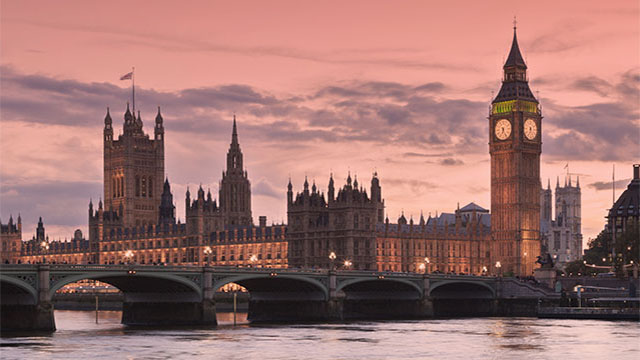Why isn’t Southampton’s economy as successful as Bristol’s? It’s a question that puzzles property folk and worries the local council.
With its thriving port and sunny ?South Coast lifestyle, good links to London and a wealthy hinterland, it ought to be a premier-league business location like its West Country cousin.
Yet local agents say, wearily, that Southampton struggles to compete with local rivals, let alone national competitors.
According to the city council, the answer is a £3bn masterplan, designed to transform the city by 2026 (see fact box). But the newly installed council leadership is gambling the house on?the plan’s success.
The council says that around £1bn ?of the £3bn masterplan is already being delivered. Many of the early wins are in the retail and leisure sector and in upgraded port facilities (see box on p101).
Behind these lie another dozen projects in various early stages, ranging from the £45m Aegas Bowl cricket ground (recently hit by financial problems with the contractor) to the £500m Centenary Quay (where a £7.5m grant from the government’s “build ?to rent” scheme is likely to stimulate ?the construction of 230 new homes).
The major commercial prospects ?are the flagship £330m Royal Pier scheme, which could begin to move forward next year (see side box on p101); Hammerson’s Watermark West Quay’s leisure extension, also timed ?for 2014; and the 110,000 sq ft Lloyd’s Register Building, a £120m project that will see an extra 65,000 sq ft built for ?the University of Southampton. Work on site is already well advanced.
Work is also under way at Allied Developments’ 26-storey Admiral’s ?Quay residential scheme and the £70m Mayflower Plaza student housing project at Commercial Road, backed by Terrace Hill and Legal & General Property.
Newly elected council leader Simon Letts and recently appointed chief executive Dawn Baxendale say they ?are making progress on all fronts – although some projects are moving faster than others. They also insist ?that the masterplan is deliverable, despite the need to secure funding.
Baxendale says: “Not everything ?is fully funded yet. It’s a mixed ?economy; some money is coming ?from ourselves and some from the?public sector – Watermark West?Quay is a good example.”
Letts agrees. “We expect work on ?West Quay to start quite soon – spring 2014 we hope – although it isn’t an absolute certainty. It is reliant on the ?City Deal scheme allowing us to finalise ?£7m funding from the Regional Growth Fund to pay for the public realm works.”
Meanwhile, progress on the Royal ?Pier, which is also likely to start in 2014, provides more encouragement. Hopes are high that the council will reach ?its target of 7,000 jobs by 2026.
However, a quick calculation ?suggests that the £3bn masterplan?is buying jobs at the staggering rate ?of £428,000 each. Does this mean the ?£3bn figure has been massaged upwards?– or is it a sign that the masterplan?risks seriously underperforming?
Baxendale says not, and that the ?£3bn figure is reliable. “We’re trying ?to not over-promise on jobs,” she says.
Yet according to the Centre for Cities think tank, Southampton could indeed ?be going wrong. Its Beyond the High ?Street report, published last month, identified Southampton as a smaller ?city at risk of putting the retail cart ?before the employment horse.
Centre for Cities economist Paul Swinney explains: “Smaller cities like Southampton have underperformed,?and that’s partly because jobs are now concentrated on their outskirts – not ?in the city centre.
“The regeneration debate since the 1990s has ignored the primary function of city centres as workplaces and focused on retail-led regeneration instead. But without jobs – and residents – city centre retail will struggle. Bring jobs back into the city centre, and retail will follow.
“I think Southampton city council understands this to an extent, but ?like many smaller cities, it has already seen a lot of jobs go out of town. It is trying to address the problem of office space in the city centre, but there is ?still a large focus on retail and there should be less emphasis. Retail-led regeneration is an oxymoron.”
Council leader Letts says the council gets the message and is already acting on it. Its city centre masterplan could deliver up to 2.69m sq ft of commercial floorspace up to 2030, with early hopes fixed on the 645,000 sq ft office prospect of the Royal Pier.
“Yes, we could always do more. We ?are keen to maximise the number of ?city centre jobs, and we have a mixed?city centre,” he says. “We already have 40,000 people working in the city and we’ve given planning permission for ?two big office schemes at The Bond, where Cumberland Commercial has permission for 157,000 sq ft, and for 60,500 sq ft by Development Securities on a site next to West Quay.”
The innovation centre is key to ?the council‘s plans, says Letts. “The comparison with Bristol is valid, but Bristol has specialised in new media developments for years. We need?to move into this market with small businesses. It’s an aspiration for us.”
Opening up more of the waterfront, which will be possible if the Marchwood military port is sold, will also take Southampton in a more Bristol-style direction, says Letts. In the meantime, the council says the relocation of Lloyd’s Register from London shows that the city is capable of attracting new occupiers.
“We have sites ready,” says Baxendale. “The city may have kept its light hidden for the past 20 years, but we absolutely want to see new business now.”
If Letts’ and Baxendale’s masterplan succeeds, Southampton’s business sector could burn as brightly as Bristol’s for decades to come.
Royal Pier
The £330m redevelopment of the Royal Pier has moved a step closer.
This is the flagship project of the city’s £3bn masterplan, and it could involve up to 645,000 sq ft of office development.
Stalled since 2010 due to port operational issues, the project has suddenly sprung back to life.
The council, Associated British Ports and the Crown Estate have now agreed heads of terms after ABP decided that its operational anxieties were resolved.
Council chief executive Dawn Baxendale says: “This is the furthest we’ve got with the Royal Pier, which could include a significant office development. A development agreement is three or four months away, with planning applications likely next year. There is a huge amount of goodwill behind this.”











